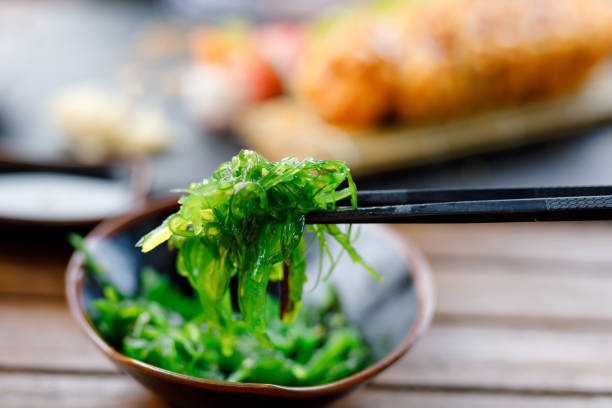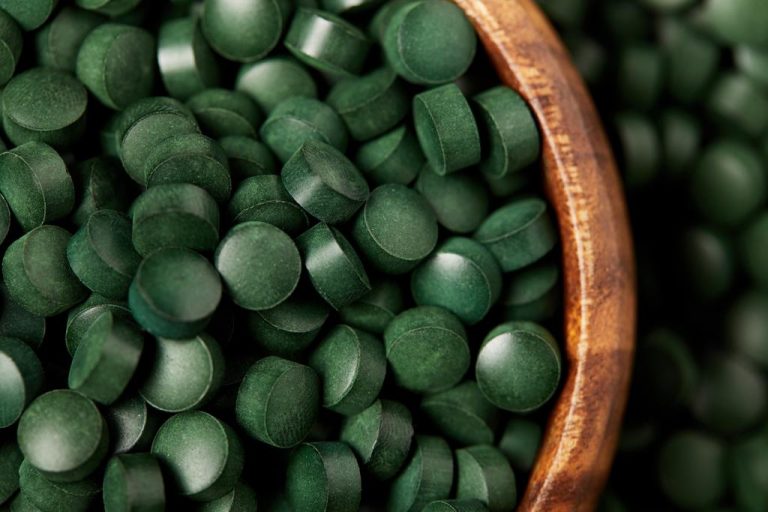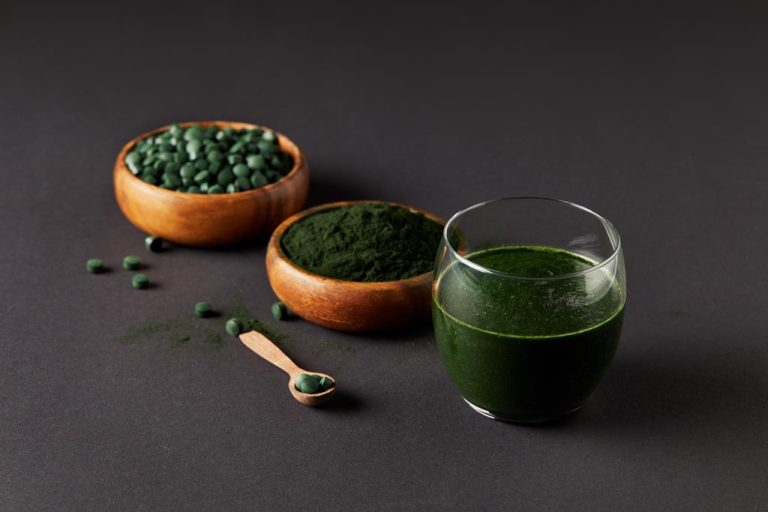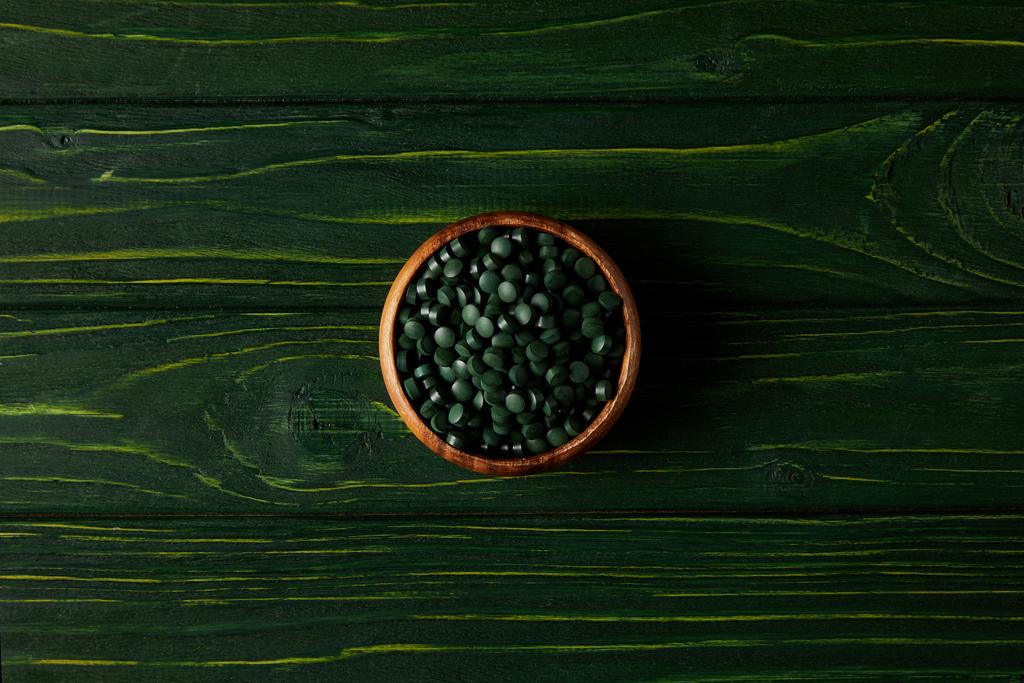Chlorella, a tiny, green spherical protozoa, is said to be able to solve almost all medical problems on earth. And by the way, with enormous nutrient density and easy cultivation, we can eliminate the world nutritional problem.
We are talking about the freshwater microalgae chlorella, a species of algae that has been found in water bodies around the world for billions of years. The effects that are said to be chlorella are also truly impressive: the microalgae is said to rid the body of toxins, help with radiation sickness, cancer and numerous viral diseases, alleviate allergies and fibromyalgia, generally stimulate the immune system and much more.
As with its blue-green “colleague” spirulina, the description of chlorella definitely sounds too good to be true. So what’s the truth behind the claims made by seaweed fans? Do you actually experience a little green miracle with chlorella – or is that more appearance than reality? 
What type of chlorella is it?
What exactly is chlorella? There is actually no such thing as “the” chlorella. Rather, it is the name of an algae genus that currently has 24 recognized subspecies. The best known and most widely used as a dietary supplement or medicinal product are Chlorella vulgaris and Chlorella sorokiniana. The microalgae multiply through cell division, with four new algae being created every 16 to 24 hours from a “mother algae”.
Characteristic is the resistant cell wall made of several layers of cellulose, which makes processing the microalgae for human consumption difficult. The cell wall cannot be digested, so our body cannot use the nutrients locked inside. This is the same for all these types of algae, as is the nutrient profile. Which one is eaten makes hardly any difference, which is why colloquially it is only spoken of “chlorella”.
Chlorella and Spirulina—all seaweed, right?
Chlorella and Spirulina like to be literally lumped together. They’re both algae. Both are considered true all-rounders and are both offered as dietary supplements in Europe. The two “algae” are actually completely different. The blue-green spirulina is a multicellular organism and, strictly speaking, not an alga, but a cyanobacterium. It thrives in salt or brackish water and is suitable for consumption without further processing after drying. It just doesn’t taste very good.
Chlorella, on the other hand, are true algae and protozoa with a thick cell membrane. They thrive in fresh water, are only about a tenth the size of Spirulina; If you want to break open their cell wall, a special treatment is necessary. What they have in common, however, is a high protein content and a high nutrient density.
The ingredients of Chlorella
Its ingredients make the microalgae appear as a superhero. At the top is probably the protein content of around 60 percent, plus all the essential amino acids. The proteins are also reflected in the calorific value, despite a very low fat (about 5 percent) and carbohydrate content (1.2 percent), 100 grams of chlorella have almost 300 kcal. The hit list of ingredients continues with iron (about 120 mg per 100 g), magnesium, calcium, phosphorus, zinc and manganese.
And the small spherical algae have another special feature: according to recent study results, they are one of the few plant-based sources of vitamin B12. With around 100 micrograms per 100 g, the content is actually relatively high, and it is also “real” vitamin B12 (cobalamin), which can also be used by the body. Unlike other algae, chlorella can help to prevent a harmful lack of cobalamin in a vegan diet.
Chlorella as a detoxifier
Industry, conventional agriculture and other human environmental sins have ensured that our environment is polluted with numerous environmental toxins and heavy metals. Alternative healing methods see poisoning with these substances as the cause of many diseases and therefore recommend detoxification. The detox effect of chlorella is said to be particularly good. In fact, due to the structure of its cell membrane, the spherical alga binds heavy metals from the waters in which it lives.
However, the studies on the detox effect of chlorella were mainly carried out on mice, rats or in the test tube. The few studies on humans are not very meaningful due to small samples or methodological flaws. Perhaps the microalgae actually help with detoxification – but then only with an intact cell wall, which in turn prevents the algae from absorbing nutrients. The same applies to pets, where chlorella is often recommended for detoxifying chronically ill dogs, cats or horses. No scientific data is available on this, the evidence of effectiveness is based purely on descriptions by the owners.
What are the effects and side effects of chlorella?
The detoxification effect of green algae has not yet been scientifically proven. And what about other possible effects and side effects? Many wondrous things are attributed to the algae: A regulating effect on the immune system that fights infections and can alleviate allergies; a beneficial effect in fibromyalgia, anemia and hypertension; a metabolism-regulating effect that also helps with diabetes and even an anti-cancer effect.
Scientific studies on these modes of action have existed for several decades. They also seem to confirm this. There is only one catch: In all summaries it can be seen that the studies were almost exclusively carried out on mice, rats or in vitro (test tubes). Current meta-studies also show that the use in humans has only been researched to a very limited extent. In an evaluation according to scientific criteria, it must also apply to chlorella that it could have these effects, but it is by no means certain.
About the side effects of chlorella it can be said that the alga is generally well tolerated. However, attention should be paid to the dosage. If the dose is too high, diarrhea, nausea, vomiting or dizziness can occur, and sometimes headaches. These symptoms are attributed to “detoxification” but are mostly based on an intolerance and should therefore not be ignored.
Chlorella: tablets, capsules and powder – how the algae is absorbed
A 5 micrometer small spherical alga cannot be eaten just like that. Not even when it comes to millions of algae. In addition, the human body cannot digest the cell membrane of the microalgae and the nutrients inside the cell would therefore not be accessible. Chlorella is therefore dried after harvesting from the freshwater basins, the cell walls are broken open using a special process and processed into powder. This powder is then pressed into chlorella tablets or filled into capsules. The recommended daily dose is 3 to 10 g per day divided into two to three times. In the short term, the dose can also be increased to 30 g a day for two days, more is not recommended.
If so, then buy organic chlorella
There are now many ways to buy chlorella. It is available as a dietary supplement in health food stores, in organic shops or drugstores and, of course, in various online shops. When buying, however, you should always make sure that you buy organic chlorella with a quality guarantee from the manufacturer. Because the heavy metal-binding properties of the algae are not only positive. Cultivated in polluted waters, especially in China, chlorella can quickly lead to heavy metal poisoning – the opposite of the hoped-for detoxification.
Sustainability of chlorella algae
In terms of sustainability, there is a big question mark with chlorella algae. On the one hand, the algae are easy to cultivate, multiply quickly and have a strong nutrient profile. On the other hand, in order for these nutrients to become available, they first have to be “broken up” in a laborious process. As a means of combating hunger in the world, they therefore appear to be unsuitable.
In addition, the microalgae grow in fresh water, which, if it is clean, would be better used as drinking water. If the water is dirty and polluted, the algae pull the toxins out of the water – but are then no longer suitable for consumption. In addition, there is the transport from countries like China, which doesn’t exactly improve the eco-balance either.











